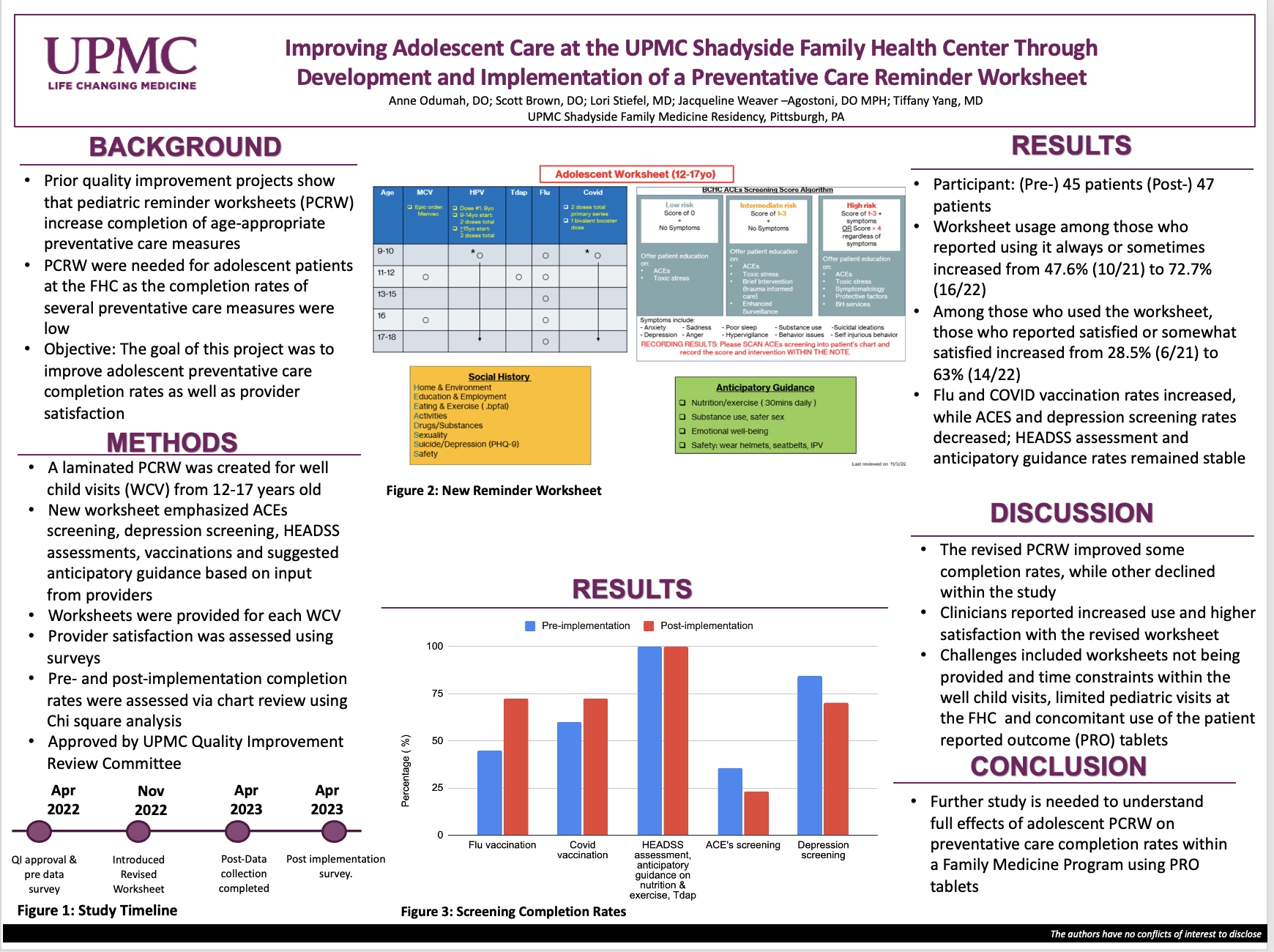Seeking to Improve Adolescent Care at the UPMC Shadyside Family Health Center Through Development and Implementation of a Preventative Care Reminder Worksheet
Authors:
Anne Odumah, DO; Scott Brown, DO; Lori Stiefel, MD; Jacqueline Weaver-Agostoni, DO, MPH; Tiffany Yang, MD
Background:
Prior quality improvement projects illustrate that pediatric care reminder worksheets increase completion of age-appropriate preventative care measures. New worksheets were needed for adolescent patients at the UPMC Shadyside Family Health Center (FHC) at the beginning of this project, as completion rates of several preventative care measures were low. The goal of this project was to improve adolescent preventative care completion rates as well as provider satisfaction by developing and implementing new reminder worksheets for this age range.
Methods:
A laminated adolescent care reminder worksheet was created for well-child visits of patients aged 12-17 years at the UPMC Shadyside FHC based on provider feedback and national preventative care guidelines. The new worksheet emphasizes Adverse Childhood Events (ACEs) screening, depression screening, home, education/employment, drugs, suicidality, and sex (HEADSS) assessments, vaccinations, and suggested anticipatory guidance. Reminder worksheets were to be placed on clipboards for each adolescent well-child encounter for use by the provider during the visit. Pre- and post-implementation completion rates were measured via chart review and compared using Chi square analysis.
Results:
The data from 45 well-child visits pre–implementation and 47 visits post-implementation were assessed. Completion rates of two measures, flu and COVID vaccines, increased significantly, 44.8% to 72.3% and 60% to 72.3%, respectively. Rates of three measures remained at 100% (HEADSS assessment completion, anticipatory guidance about nutrition and exercise, and Tdap vaccination rates). Other rates decreased, including significant decreases in depression screening, ACEs screening, and HPV vaccinations. Discussion: Implementation of adolescent care reminder worksheets improved some preventative care completion rates, while others declined within the study period. Proposed challenges include reminder worksheets not being placed on clipboards and limited time within well-child encounters. This data was also affected by concomitant implementation of patient-reported outcome (PRO) tablets which were introduced 1 month after the implementation period began. Provider satisfaction data is pending currently.
Conclusion:
Further study is needed to understand the full effects of adolescent care reminder worksheets on preventative care completion rates within a Family Medicine residency program using PRO tablets.

